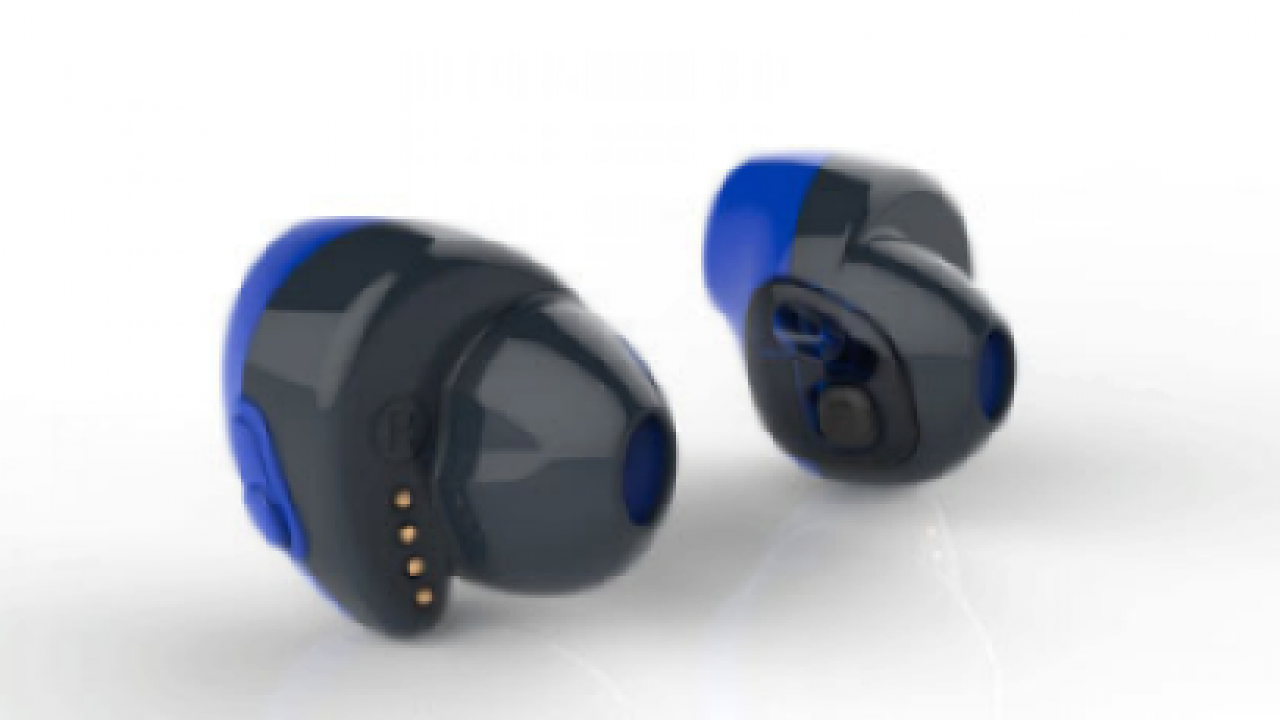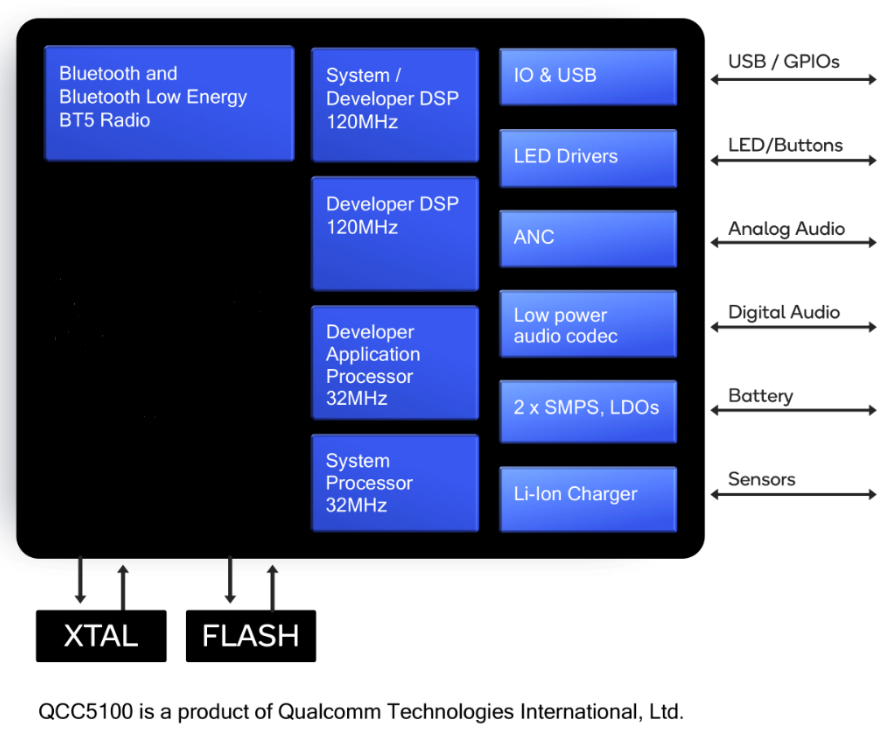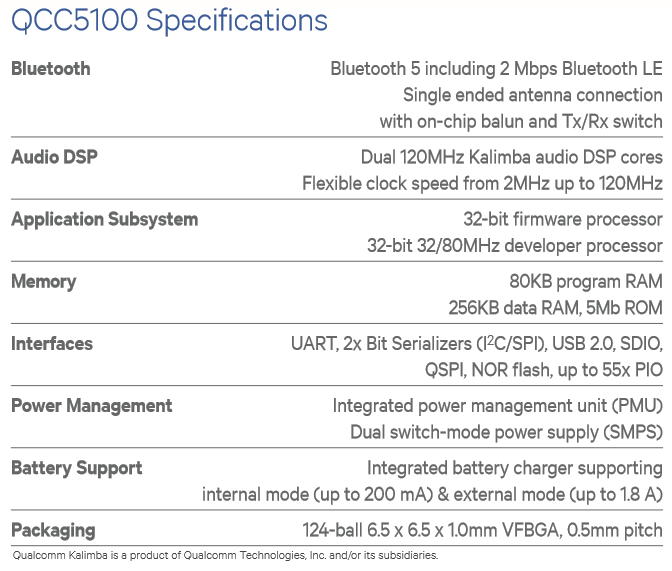Earbuds for the Future
Article By : Junko Yoshida, EE Times

Highly integrated SoCs in your earbuds?
MADISON, Wis. — Earbuds are not widely esteemed as a hotbed for new technology development. But while few people were watching, these little audio gadgets have gone remarkable evolution, as demonstrated at the Consumer Electronics Show last month.
Launching a new era for earbuds is a team of engineers at Qualcomm — formerly at Cambridge Silicon Radio (CSR) — known for their technical chops in wireless connectivity and audio technology. Qualcomm acquired CSR in 2015.
Until recently, the biggest advance in earbuds was when they went totally wireless, as seen in Apple’s Airpods. While Apple got a lot of flack for their decision to forgo a headphone jack on their iPhones, this started a trend to cut the cord between a music source and earbuds, or between earbuds.
Audio processors go inside earbuds
However, with its new Bluetooth SoC, dubbed QCC5100, Qualcomm isn’t just proposing low-power Bluetooth wireless connectivity between handsets and earbuds. Qualcomm is putting a whole new audio and application subsystem inside earbuds. In other words, now that earbuds have their own batteries, designers can put an SoC inside.
The QCC5100 is just such an SoC. Its quad-core processing architecture consists of two application processors and two DSP units, making an extensive degree of parallel processing possible.

Chris Havell, a senior director at Qualcomm, told us, “Processors inside the earbuds can do a lot of things.” He predicted versatile headset applications ranging from enhancing streamed music to eliminating ambient noise, offering better voice assistant capabilities and even measuring biometrics that take advantage of earbuds inside ears.
Havell cited several factors that have enabled earbud evolution. The most obvious is the popular adoption of portable devices. Consumers on the go want to stay connected, and don’t want to sound fidelity clipped just because their technology is wireless, he noted.
Paul Erickson, a senior analyst at IHS Markit, observed that Bluetooth headphones have been “a source of reliable, double-digit growth” over the past several years. Demand is driven by two factors, said Erickson: “an ever-increasing installed base of mobile devices” and “changes in the way consumers consume media.”
More important, though, is that people are beginning to look to headsets for applications beyond entertainment. A rapidly growing need is for better voice enabled by headsets and earbuds, Qualcomm’s Havell said.
Attention to voice has escalated with the proliferation of smart speakers such as Amazon Echo and Google Home. “But think about it, it makes even more sense to have better voice on headsets/earbuds,” said Havell. “People use them for phone conversation, and voice-assistant applications.” Consumers on the go don’t have a large screen in front of them, thus making voice-triggered search applications, for example, even more crucial.
Qualcomm also foresees the use of earbuds for capturing biometric information. At a time when consumers are already more than willing to use sensors embedded in smartphones for their fitness/health applications, their own ears present an additional target for applications that probe a user’s health status — including temperature and heart rate, explained Havell.
Further, earbuds can provide location information about the user’s head, providing to handset applications such information as which way the user is heading or into which direction he is looking.

IHS analyst Erickson described Qualcomm as a leading thinker on the headset/earbud front. “They have a lot of interesting visions,” he said. Although the notion of earbuds collecting biometric data might capture some imagination, Erickson sees it still as “a niche market.” Where the sweet spot is, and what people are willing to pay, are earbuds that can offer “noise cancellation,” he predicted.
People are always surrounded by variable ambient noise. “How much of that noise can be blocked out by earbuds, or how actively earbuds can zoom in and selectively choose what a user needs to listen to, would be important,” Erickson said.
Phones vs. earbuds: audio partitioning
When earbuds cease to be just dumb earbuds, the question becomes the balance of audio processing between smartphone and earbuds.
Havell noted that handsets will be the place to connect to the cloud, interacting with music services. Because such music sites use different codecs, handsets will bear the burden of transcoding, he explained.
Once transcoded, though, decoding the audio codec and applying post-processing to the streamed audio will be left to headsets/earbuds.
Once a handset, for example, figures out whether the music it is streaming to a headset is classical or rock ’n’ roll, it can then “send certain commands to headsets/earbuds,” such as to increase string resonance or boost the bassline in post processing, Havell explained. In short, future earbuds will share the job of enhancing music together with handsets.
Of course, the next-generation headsets and earbuds aren’t just for streaming music. System designers envision devices that can block noise or eliminate ambient noise, as they support voice user interface and voice assistant services.
Inside earbuds SoC
Havell is pitching his company’s QCC5100 series as “purposefully designed for ultra-low power performance.” Inside are a Bluetooth 5 dual-mode radio, low-power audio and application subsystems that include two 32-bit processors (based on Qualcomm’s proprietary core) and dual 120Hz audio DSP cores (based on formerly CSR, now Qualcomm’s proprietary DSP cores, called Kalimba).
The DSP cores in the SoC are particularly good at sensing the world “around me” and reducing unwanted noise, said Havell. The DSPs in the QCC5100 SoC come with active noise cancelling (ANC) technology, while eliminating the need for an external ANC solution. The goal of such a highly integrated SoC is to lower “the complexity, cost and PCB space needed for adding ANC to earbuds, hearables, and other portable audio devices,” Qualcomm explained.

Qualcomm’s QCC5100 also offers “Qualcomm aptX and aptX HD audio technologies,” designed to deliver consistent, high-quality audio streaming over Bluetooth. The internal 24-bit end-to-end audio pipeline and high-performance DACs help provide high resolution audio delivered through the audio processing chain, the company added.
The most important consideration in designing the SoC was “power consumption,” noted Havell. He claimed that with QCC5100, power consumption for earbuds is reduced by up to 65 percent for both voice calls and music streaming. Devices are optimized to support longer audio playback in virtually all operating modes.
Presumably, the flexibility provided by the fully programmable applications processor and audio DSPs in the SoC should enable developers to customize their algorithms to work better in tandem with phones and earbuds. Earbud manufacturers should find it easier to differentiate their products with new features without extended development cycles, Qualcomm.
Down the line, a lot more can be done with earbuds, hearables, and portable audio devices. These challenges include customizing earbud that can phsically better match the shapes of ears, and enhancing sound specifically for individuals’ hearing abilities, Havell explained.
— Junko Yoshida, Chief International Correspondent, EE Times
Subscribe to Newsletter
Test Qr code text s ss


